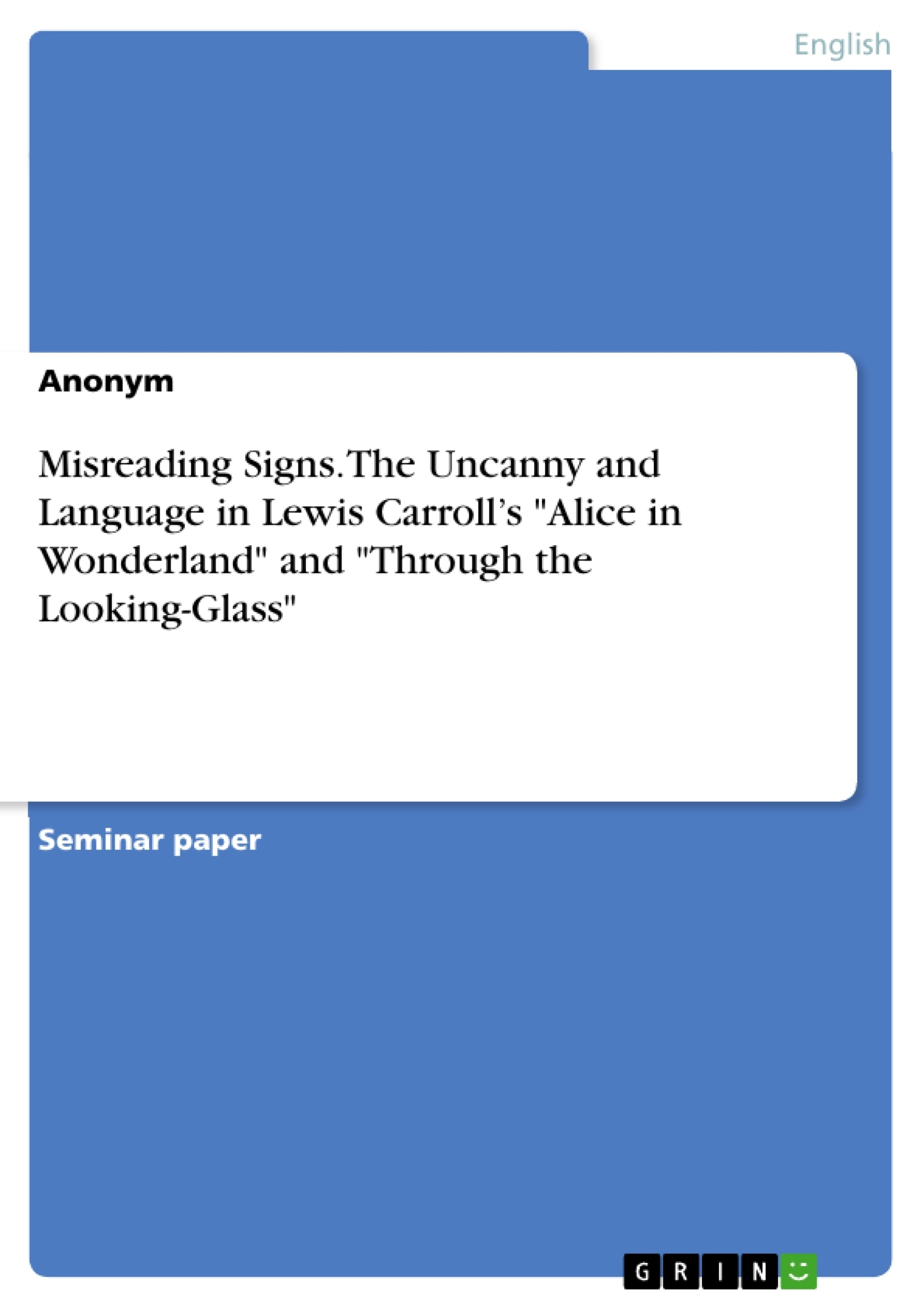The aim of the dissertation is an analysis of Lewis Carroll’s "Alice in Wonderland" and "Through the Looking-Glass" in regard to the uncanny and its relation to language. For the purpose of the study on the psychoanalytical concept of the uncanny in connection with linguistic theory, the most important theories have been evaluated in the first chapter of the dissertation, titled “The Concept of the Uncanny and its Relation to Language”.
Afterwards the chapter “The Uncanny and Language in Lewis Carroll’s "Alice in Wonderland" and "Through the Looking-Glass" applies the acquired theoretical framework to the two selected texts in order to understand the different ways in which Carroll manipulates language in order to create an uncanny atmosphere.
Inhaltsverzeichnis (Table of Contents)
- Introduction.
- The Concept of the Uncanny and its Relation to Language.
- The Uncanny and Language in Lewis Carroll's Alice in Wonderland and Through the Looking-Glass
- Conclusions
Zielsetzung und Themenschwerpunkte (Objectives and Key Themes)
This dissertation aims to analyze Lewis Carroll's Alice in Wonderland and Through the Looking-Glass in relation to the uncanny and its connection to language. It examines how Carroll utilizes linguistic techniques to create an uncanny atmosphere. The study evaluates key psychoanalytic theories of the uncanny in relation to linguistic theory.
- The nature of the uncanny in the Alice narratives
- Carroll's use of linguistic techniques to create an uncanny atmosphere
- The role of silence, homophony, names, and wordplay in the creation of uncanniness
- The relationship between language, identity, and the illogicality of language
- The broader context of uncanny language in literature
Zusammenfassung der Kapitel (Chapter Summaries)
- Introduction: This chapter provides a brief introduction to the topic of the uncanny and language in Lewis Carroll's Alice books, highlighting the significance of translation and the inherent strangeness it presents.
- The Concept of the Uncanny and its Relation to Language: This chapter explores the problematic nature of defining the uncanny, analyzing the works of key scholars such as Ernst Jentsch and Sigmund Freud. It discusses how both scholars have attempted to define the concept but ultimately fall short of providing a precise definition.
- The Uncanny and Language in Lewis Carroll's Alice in Wonderland and Through the Looking-Glass: This chapter delves into the specific ways Carroll manipulates language to create an uncanny atmosphere in the Alice books. It analyzes various linguistic techniques employed, including silence, homophony, names, and wordplay, and their impact on the reader's perception of the narratives.
Schlüsselwörter (Keywords)
The primary keywords and focus topics include the uncanny, language, Lewis Carroll, Alice in Wonderland, Through the Looking-Glass, linguistic theory, psychoanalytic theory, translation, silence, homophony, names, wordplay, identity, illogicality of language, and literary analysis.
- Arbeit zitieren
- Anonym (Autor:in), 2011, Misreading Signs. The Uncanny and Language in Lewis Carroll’s "Alice in Wonderland" and "Through the Looking-Glass", München, GRIN Verlag, https://www.grin.com/document/345171



